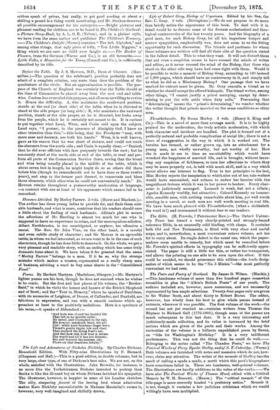Before the Table. By J. S. Howson, D.D., Dean of
Chester. (Mac- millan.)—The question of the celebrant's position probably does not admit of a complete solution, any more than does the problem of the quadrature of the circle. But an approximation is possible. The pur- pose of the Church of England was certainly that the Table should at the time of Communion be placed away from the east end and table- wise. Custom has overruled this purpose, and all seem unwilling to revive it. Hence the difficulty. A, who maintains the southward position, stands at the end (or short side) of the table, when he is directed to stand at the side proper (or long side); B, who maintains the eastward position, stands at the side proper, as he is directed, but looks away from the people, which he is certainly not meant to do. It is curious to put together what Laud, Wren, and Cosin said upon the subject. Land says, "I protest, in the presence of Almighty God, I know no other intention than this,"—this being, that the Presbyter "may, with more ease and decency, use both his bands." Wren, it is well known, gave as his reason that he was short of stature, and could not reach the elements from the north side ; and Cosin is equally clear,—" Denieth that he did ever officiate with face purposely towards the east ; but he constantly stood at the north side or end of the table, to read and per- form all parts of the Communion Service there, saving that the bread and wine being usually placed in the middle of the table, which is about seven feet in length, he might haply do so as others did there before him (though he remembereth not to have done so these twelve years), and step to the former part thereof, to consecrate and bless those elements, which otherwise he could not conveniently reach." Dr. Howson retains throughout a praiseworthy moderation of language, —a contrast with one at least of his opponents which cannot fail to be remarked.


































 Previous page
Previous page